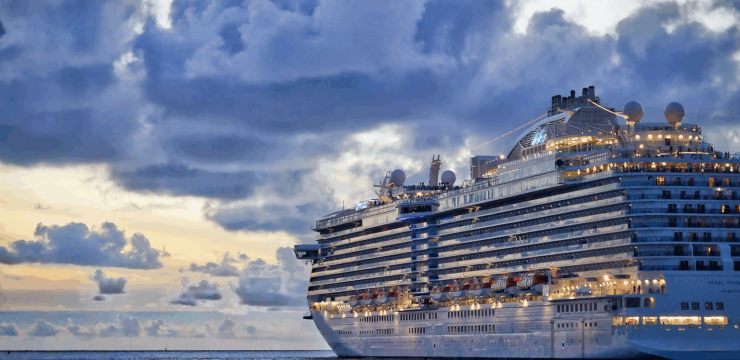In the heart of Hangzhou’s central business district stands a building so massive and unique that it has captured the attention of millions on social media, especially TikTok. Known as Regent International, this towering structure has earned the nickname “the Dystopian Apartment” due to its overwhelming scale and futuristic design.

Soaring 675 feet into the skyline, the building winds in an S-shape and was designed by Alicia Loo, the same architectural mind behind Singapore’s iconic Marina Bay Sands. While it can technically house up to 30,000 people, current estimates place the number of residents around 20,000—and that number alone is enough to make your jaw drop. What sets Regent International apart isn’t just its size but its all-encompassing concept of urban living. This is more than an apartment complex—it’s an entire micro-city packed into one building. With as many as 39 floors at its tallest point, it’s essentially a vertical neighborhood.
Inside, residents can access everything from grocery stores and restaurants to swimming pools, salons, cafes, and even internet bars. The idea is to create a self-contained world where everything you need is just an elevator ride away. For many young professionals, students, and influencers, this type of convenience is a dream come true, especially in a city like Hangzhou where affordable housing is hard to come by. Rent at Regent International starts at around $200 a month, with larger units going for about $600.
Considering the amenities and central location, it’s no surprise that people are flocking to live there. For those just starting out or living a digital nomad lifestyle, this high-rise community provides a one-stop shop for work, life, and play. But not everyone is convinced that this futuristic lifestyle is ideal. Critics argue that packing so many people into such a tight space leaves little room for personal privacy, meaningful community interaction, or even outdoor activities. Some even say it feels like a scene from a sci-fi dystopia—where people live shoulder to shoulder in towering blocks, disconnected from nature and the outside world.
The term “dystopian” may seem extreme, but when you picture tens of thousands of people living inside a single building, it’s easy to see how the label caught on. Concerns have been raised about mental health, over-dependence on indoor spaces, and what happens in the event of a large-scale emergency. Still, others see Regent International as a possible answer to a global problem—how to house more people in cities without destroying the environment with endless suburban sprawl. Cities around the world are running out of space, and many urban areas are struggling with affordability and homelessness. Buildings like this could serve as a model for high-density, sustainable living. In fact, this idea isn’t entirely new. A similar concept exists in Whittier, Alaska, where almost the entire population lives under one roof in a single building. That experiment, while on a much smaller scale, raises some of the same questions about quality of life and community. What makes Regent International stand out is the sheer ambition behind it—the idea that you can fit an entire town into one vertical structure and still offer a high standard of living. Whether you view it as a forward-thinking innovation or a cautionary tale about modern isolation, there’s no denying that it pushes the boundaries of what we imagine city life to be. As cities continue to grow and space becomes even more limited, we may start seeing more of these mega-structures popping up in urban centers across the globe. They offer a solution, albeit one that challenges traditional ideas of home, neighborhood, and lifestyle. Love it or hate it, Regent International is more than just a building—it’s a bold experiment in how we might live together in the future, stacked high above the ground, sharing walls, elevators, and maybe even a new definition of what community really means.





